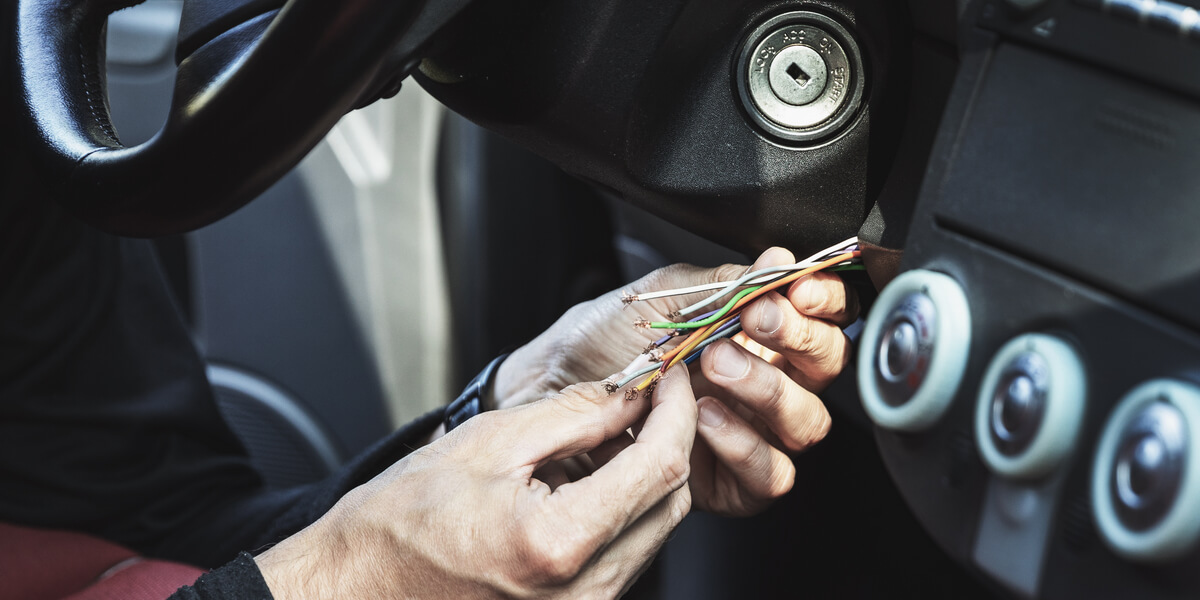
We’ve all seen at least one Hollywood movie where the protagonist hotwires a car to chase after the bad guys. Hotwiring is so imprinted in popular culture that many people wonder if that’s even really possible. Well, the short answer to the question is: yes, you can hotwire a car. The long answer is: it depends...
But should you really do that? Hollywood makes it look so easy, but when done improperly, hotwiring can cause a short circuit and damage other components. Needless to say, I don’t recommend hotwiring a car. If you lost your keys, for example, your best bet is still to call a professional locksmith or just to have your car towed to the nearest car dealer.
However, we are well aware of the fact that you probably didn’t click on this article to read about calling a tow truck, though. Don’t worry, we hear you! You’ll find every way to hotwire a car down below. It’s important to note, though, that you should only do this in an absolute emergency. Like, losing your keys in the middle of the night and being stranded somewhere. Or if you had to save your brother from being killed by professional car thieves (there had to be at least one reference to Gone In 60 Seconds in this article, lol). Otherwise, you should definitely rely on professionals.
Now, there are three different ways to start a car by hotwiring. The most popular one is by hotwiring wires in the steering column, but you can also drill the lock pin or via the starter solenoid. While saying it like that seems like an easy thing, it's important to keep in mind that most modern cars have safeguards put in place that won’t let you hotwire them. But let’s get into more detail below.
What is Hotwiring?
Each time you put the key into the ignition switch and turn it to the ON position, electricity starts to flow from the battery to the ignition and all the electrical components. When the key is turned to the RUN position, the ignition powers the starter motor, which then starts the engine.
With hotwiring, you’re circumventing the ignition. Instead of closing the electrical circuit by turning the ignition key, you’re doing it by other means. Every method to start the engine that doesn’t include the keys is called hotwiring.
Which Cars Can be Hotwired?
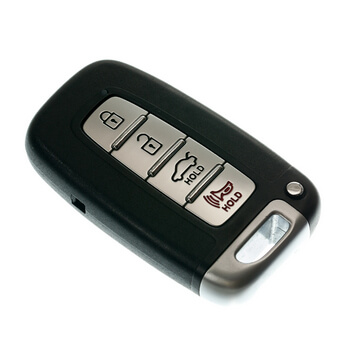
Only older vehicles from the 90s’ and earlier can be hotwired. These cars don’t have safeguards put in place to limit hotwiring and can be started with various methods depending on the model and manufacturer.
To be sure that you can hotwire your car, check if it has an immobilizer. You can quickly tell that by looking at the keys. In vehicles with an immobilizer, the keys usually have a chip embedded on the metal part. Recent cars with key fob instead of a physical key all have an immobilizer system. Same thing with cars equipped with a Start/Stop button.
Don’t Try to Hotwire Cars with an Immobilizer
The immobilizer is an electronic security device built into all modern vehicles. With this system, modern cars are much more secure against theft. The immobilizer reads a code imprinted on a chip on your car keys. Every time you put the keys into the ignition, the immobilizer recognizes them and starts the car.
If the keys don’t have the right chip, the immobilizer will prevent the engine from starting, either by cutting the flow of current going to the fuel or the ignition system. And, that is even when the profile of the keys is the same as the original.
To put it simply, the ECU won’t get the full information from the immobilizer to start the engine. That’s why you can only purchase new keys at an authorized service or dealer these days – they need to have a chip and the chip needs to be paired with the immobilizer system.
For those reasons, hotwiring a car with an immobilizer is close to impossible, at least for amateurs. Thieves have found ways to circumvent the immobilizer, of course. However, it requires some purpose-built tools and a lot of expertise. Needless to say, I don’t recommend trying to hotwire a car with an immobilizer.
Most Common Techniques to Hotwire a Car
Depending on the type of car, three different hotwiring methods exist. Let’s explore each one in more detail so you can find the best approach for your car.
Drill the Lock
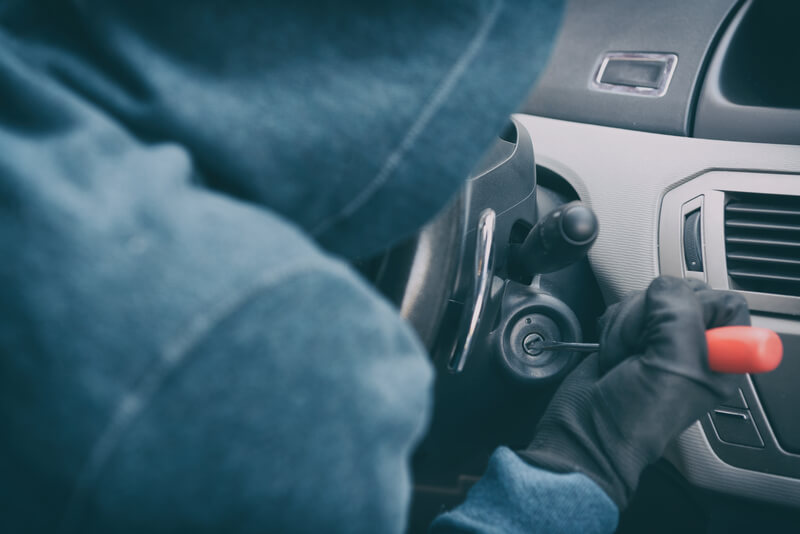
The easiest one is to use a drill and a screwdriver instead of your car keys. However, this approach only works on a small number of vehicles, and it will damage the ignition switch beyond repair.
If you still want to continue, follow these simple steps:
- Carefully place the drill inside the ignition switch and don’t push it past the limit.
- Start drilling for a few seconds. Then, remove the drill and put it back again. This should break the pins inside the lock.
- Once all the pins are broken, you can use a screwdriver to turn the ignition switch and start the engine.
Another variant of this technique is to use the drill to remove the shear screws holding the ignition lock in place. Once it's done, you can remove the ignition lock, access the ignition switch, and simply turn it using a screwdriver to start the engine.
Once again, this technique won't work if the car is equipped with an immobilizer system. Drilling the lock or removing it will not deactivate the immobilizer.
Jumping Wires in the Steering Column
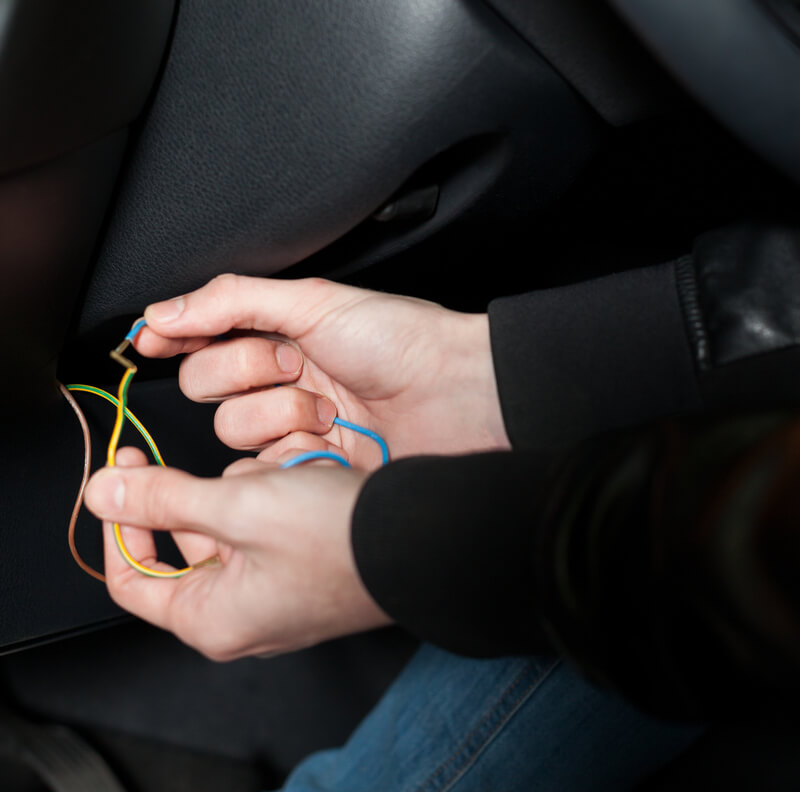
Because using a drill will damage the ignition switch, I recommend going for the Hollywood-style hotwiring. To do this, you’ll need to jump some wires under the steering column.
This method requires much more time and higher expertise. That’s why I must stress that people who don’t have experience with electric systems should probably avoid it.
Even if you are confident about your skills, you'll probably need to look at the ignition system's wiring diagram inside your car's repair manual first. Simply jumping random wires won't do.
- Remove the cover under the steering column. Depending on your car, the column should be held in place by Philips-type screws. Unscrew all the screws and remove the cover. This should reveal the ignition switch wires and connectors.
- Locate the wires that lead to the ignition switch. To do that, it’s best to put your fingers on one end and work your way to the other end. Take as much time as you can to be entirely sure. Jumping other wires might damage other components, such as the steering wheel control, indicator stalks, or dashboard instruments.
- Pull the wires and connector aside. Then, refer to your car's repair manual to see which wire does what.
- Use wire strippers to strip insulation from the battery and ignition wires. Then, wrap each wire around each other and use insulation tape, but don’t cover the wires fully. This should provide electricity to most vehicle components.
- Then, use the same wire strippers to strip insulation from the starter wire.
- Finally, touch the starter wire with the connected battery and ignition wires. This will create a big spark, so be careful not to touch bare metal. The engine should start immediately. Put the starter wire aside and make sure that it doesn’t touch anything metallic. When you want to shut down the engine, simply unwrap the battery and ignition wires.
Using Jumper Cables
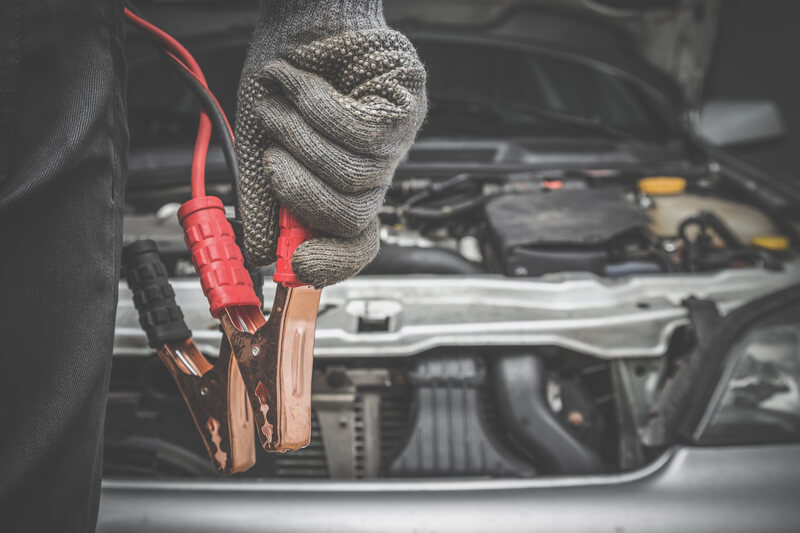
You can also use jumper cables to hotwire a car. Before you do that, though, you need to locate the ignition coils and solenoid terminal on your vehicle. When in doubt, take a look into your car's repair manual for more details. Then, follow the steps below:
- Connect the red side of the jumper cable to the positive (red) battery terminal. Then, connect the other end of the cable to the positive side of the ignition coil. This will provide electricity to the ignition directly from the battery.
- To activate the solenoid, connect it shortly to the positive battery terminal. The solenoid then should crank the engine.
Final Words
Losing your car keys can be a nightmare, which doesn’t mean that you should immediately start hotwiring. I can’t stress this enough, but you should only use this method in an emergency. Hotwiring can be dangerous, and it can damage other components, which will then cost more to repair than just calling for a tow truck and having your key replaced.
Moreover, prevention is always the best practice when it comes to cars. Purchase backup keys for your vehicle and keep them in a safe place. Don’t be the person that realizes this only after losing the keys.
Sure, if there is no other escape, you might try hotwiring. For the best results, though, you should use a repair manual for your vehicle. These manuals are the same as professional mechanics use when repairing a car and contain many tips on how to fix every part of your car. Trying to hotwire a car without taking a look at the wiring diagrams is pretty much useless unless you're using the drilling technique.
Good luck!
